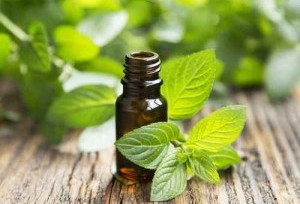
Oil therapies have been used in India for thousands of years, and are considered the secret for health, beauty and longevity. Healing oils are used by ayurvedic practitioners in cleansing and rejuvenation treatments (pancha karma), as well as in simple self-massage (abyangha) treatments.
Oil massage lubricates and nourishes the body. It improves skin tone, as well as supporting the digestive and circulatory systems. Oils release toxins and promote sound sleep. “Oil is food for the cells”, says Dr. Vasant Lad, an ayurvedic physician, “When cells become dry, they look old.”
Based on a client’s metabolic body type (dosha) and health issues, an ayurvedic practitioner formulates a personal blend using essential oils. The essential oil is the subtlest part of the plant, and has pronounced therapeutic effects on the body, mind and emotions. Our skin is our largest sensory organ, and through it we can absorb healing essential oils into our blood stream and into the lymph fluid that exists around every cell. Think about this and imagine the chemicals we absorb everyday through over the counter creams, lotions and deodorants!
Even though essential oils have been used since ancient times, their chemistry has not been studied until the last century. In 1928, Renee-Maurice Gatefosse, French perfumer and chemist, re-discovered the healing properties of essential oils. After suffering a serious burn to his hand in his laboratory, and plunging it in a vat of lavender oil, Gatefosse discovered that this oil eased the pain and assisted in rapid healing with no scarring. In 1930, he published his first research on the subject, and the term “aromatherapy” was born.
Five of the most common essential oils used in aromatherapy are:
Lavender: The essential oil of lavender has over 160 known medicinal properties, and is very good for almost any imbalance. It is one of the few essential oils that can be applied directly to the skin. In addition to burns, lavender is used for swelling, insect bites, stress and as a sleep aid. When in doubt, use lavender!
Rosemary: This oil is great for enhancing the memory. It stimulates circulation, and relieves joint and muscle pain. Combined with eucalyptus in an inhalation blend, rosemary is good for sinus and respiratory infections.
Clary Sage: An excellent oil for women, as it regulates the hormones- helping depression, anxiety, PMS and hot flashes.
Peppermint: One of the most aromatic and useful oils, it is very cooling to the digestive tract. It has both antiseptic and expectorant qualities, and is used for headaches, fever, sore throat and stomach upset.
Tea Tree: This oil has a long history as an anti-fungal and anti-viral agent. It is excellent for skin conditions, and is useful for colds and sore throats.
Ayurvedic practitioners also work with traditional Indian oils that have been used effectively for generations. Examples of these are:
Bhrami: In India, this medicated herbal oil is used primarily as a hair oil, as it increases hair growth and cools the scalp. It also helps in metal alertness.
Neem: This is one of most powerful healing oils for the skin. It is very strong with an acute pungent odor, and should be blended with a floral oil, such as lavender. Indians call the neem tree the “village pharmacy”. Research has shown that neem oil is good for severe skin eruptions, is used as an antiseptic, and as an insect repellent.
Champa: This blend is cooling, moisturizing, great for irritated skin and can be used as an aphrodisiac.
For a personal massage blend, essential oils and Indian oils are added to a base or carrier oil specific to a person’s body type. Sesame oil is ideal for vata types, fractionated coconut oil is cooling and is excellent for pitta types and kaphas need a lighter oil such as sweet almond. Jojoba oil is great for all three body types.
In ayurveda, we emphasize self-care, and an essential part of this is self-massage with your personal blend Before or after a bath or shower, massage your body in circular movements, with longer strokes on the limbs and smaller circles on the joints. The abdomen and chest is massaged using larger clockwise motions. The oils should go into the skin quickly, and any excess should be removed with a towel.
Once you develop a daily self-massage routine, you will find yourself looking forward to treating yourself to the soothing effects of the oils. This is a simple and effective way to prevent many age-related problems that most Westerners see as unavoidable, and to feel your best at any age. According to Dr. Lad, Snehana, the Sanskrit word for oleation, literally means “loving your own body”.
By Susan Wasserman, CAP, RYT 500

